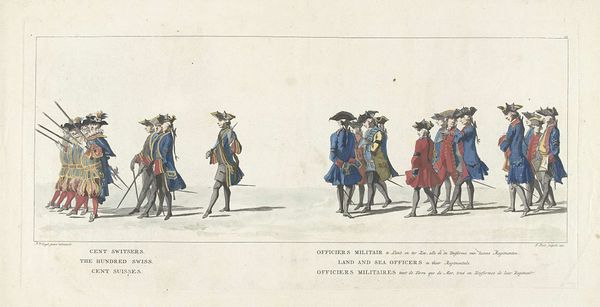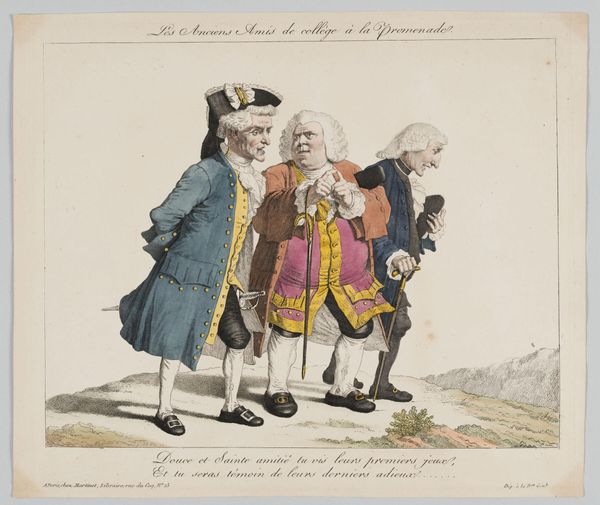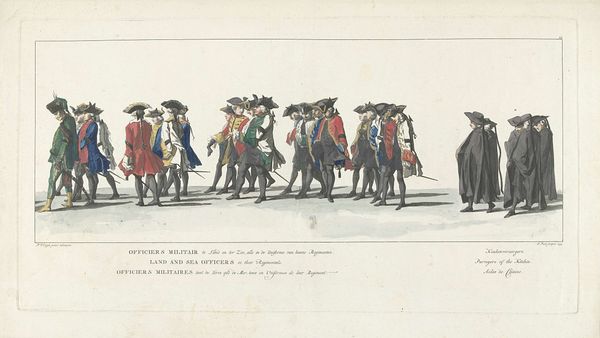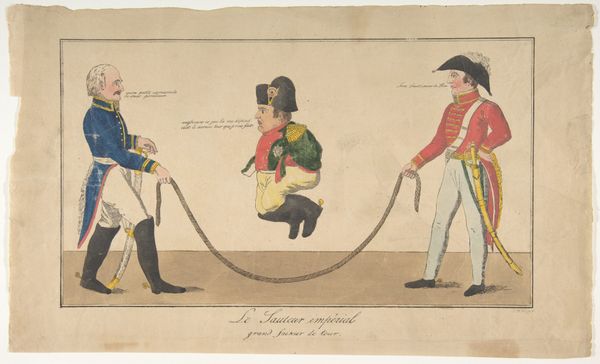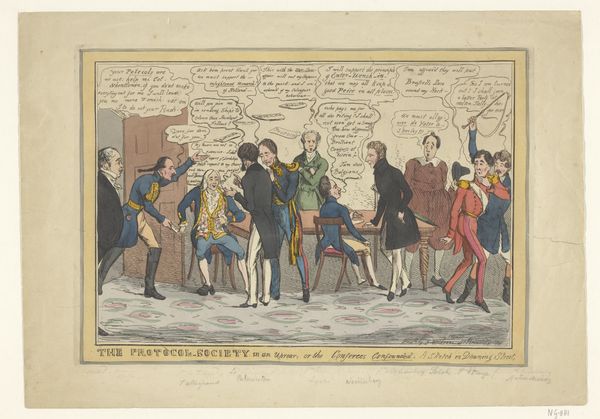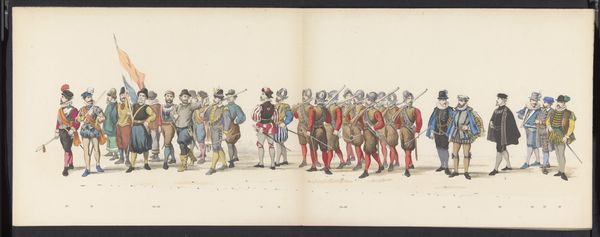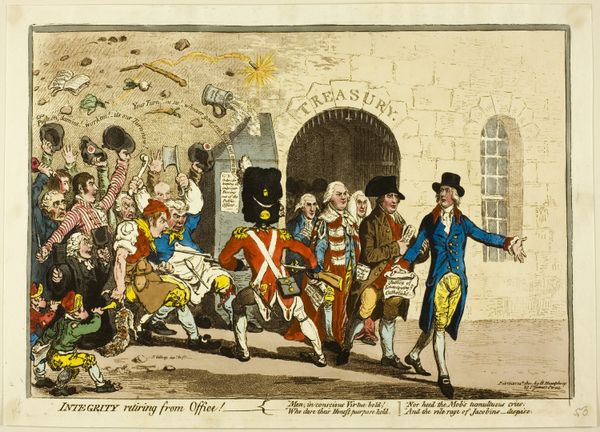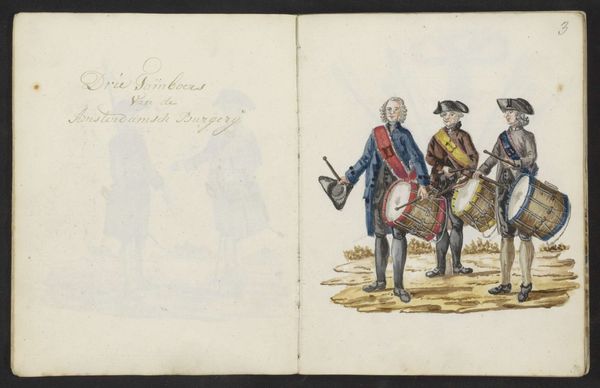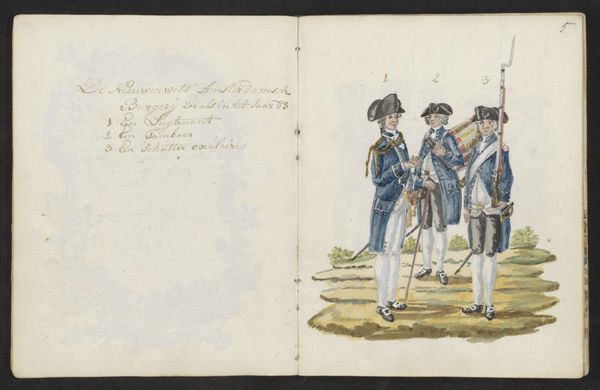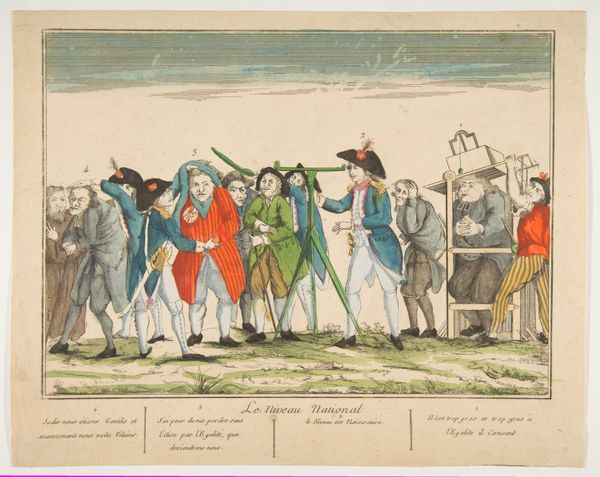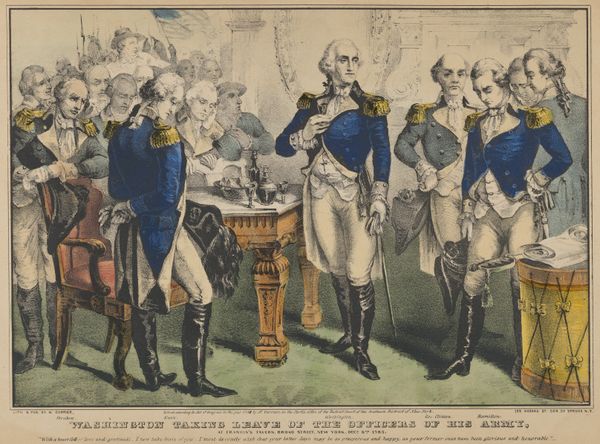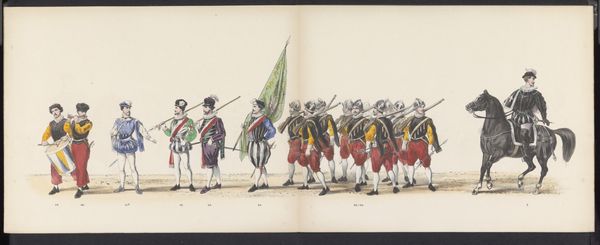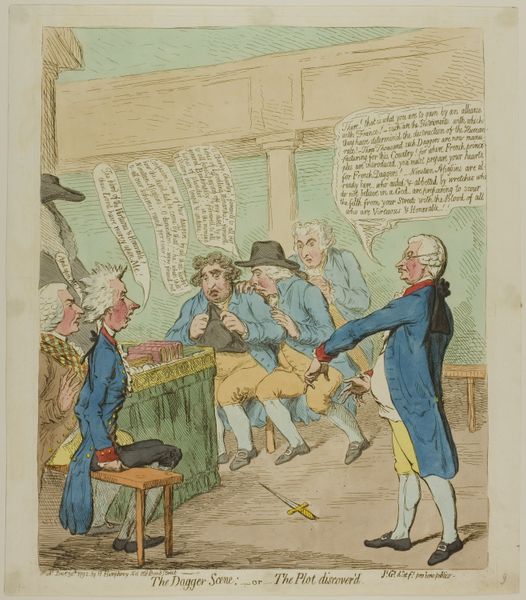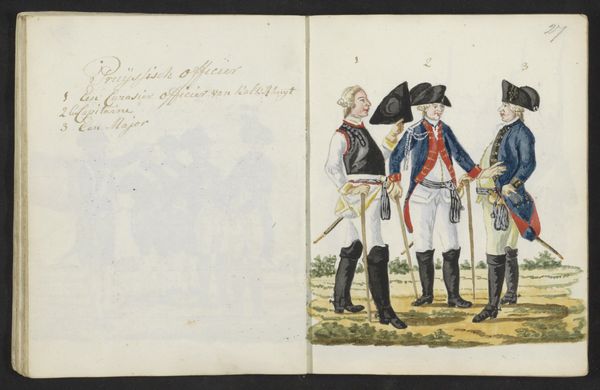
Erezaak tussen De Voglas en de hertog van Orléans, 1790 Possibly 1790 - 1798
0:00
0:00
print, etching, engraving
#
narrative-art
# print
#
etching
#
caricature
#
historical fashion
#
romanticism
#
watercolour illustration
#
genre-painting
#
cartoon carciture
#
engraving
Dimensions: height 270 mm, width 373 mm
Copyright: Rijks Museum: Open Domain
Curator: Here we have a piece called "Erezaak tussen De Voglas en de hertog van Orléans," or "Quarrel between De Voglas and the Duke of Orléans." It's attributed to Isaac Cruikshank and believed to have been created sometime between 1790 and 1798. It's a print, employing etching and engraving techniques. Editor: It immediately strikes me as theatrically staged, a very formal, almost balletic arrangement of figures despite the chaotic action implied. Curator: That theatricality speaks to the deeply embedded social commentary of the piece. Cruikshank, like many artists of his time, used caricature to critique power dynamics, particularly within the aristocracy. Consider the title, suggesting a personal quarrel. Who held power and who sought it? Editor: The crisp lines of the etching enhance that sense of deliberate composition. Each figure is meticulously rendered, their expressions and postures clearly defined for the viewer to decode. There's a narrative being meticulously built through visual cues—the lines of sight, the angles of the bodies. Curator: And notice the exaggerated features, a common tool in political cartoons. Who is being lampooned, and what statements are made through clothing, expressions, and setting about the societal roles of these individuals during this turbulent period of revolution and shifting alliances? Editor: Absolutely. And look at the use of space—the division of the image into almost two separate panels emphasizes a before and after scenario, underlining the dynamic shift implied in the subtitle, "Or the Tables Turned". It provides a structure, guiding our reading of the political message, through compositional devices. Curator: Precisely. "Symptoms of Courage" challenges traditional notions of bravery, hinting perhaps at performative acts rather than genuine conviction during a time of massive upheaval. What is the relationship between performativity and political posturing? Editor: Analyzing how Cruikshank uses line, form, and contrast invites us to see how structural techniques influence narrative and meaning in the piece, enriching our understanding. Curator: Ultimately, viewing this artwork through the lens of social and political history brings us to question what we consider to be the underlying realities depicted here. Editor: And understanding his masterful use of form helps decode these complex meanings with precision.
Comments
No comments
Be the first to comment and join the conversation on the ultimate creative platform.
